| Date | Text | |
|---|---|---|
03 Oct 1577

Fortunio Liceti |
birth Fortunio Liceti Fortunio Liceti, Italian Aristotelian scientific polymath (died 1657) |
|
03 Oct 1704
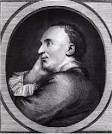
Jean Baptista Denis |
death Jean Baptista Denis Died 3 Oct 1704 (born 1640). French physician and food scientist. |
|
03 Oct 1716
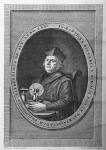
Giambatista Beccaria |
birth Giambatista Beccaria Born 3 Oct 1716; died 27 May 1781 at age 64. Giambatista (orig. Francesco) Beccaria was an Italian physicist who spread knowledge of Benjamin Franklin's discoveries with electricity, which he extended with his own research. He designed an electrical thermometer and investigated the relative powers of parallel plate condensers (capacitors). He formed explanations for meteorological and geophysical phenomena in terms of “natural electricity.” With his students, he experimentally probed the atmosphere with metal poles, kites and rockets. He published his work in five books. |
|
03 Oct 1716
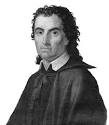
Giovanni Battista Beccaria |
birth Giovanni Battista Beccaria Giovanni Battista Beccaria, Italian physicist (died 1781) |
|
03 Oct 1803

John Gorrie |
birth John Gorrie Born 3 Oct 1803; died 16 Jun 1855 at age 51. American physician who pioneered the artificial manufacture of ice, refrigeration, and air conditioning. While he was a Naval officer stationed at Apalachicola, Florida, when he needed ice to treat malaria patients with fever, for, he reasoned, people living in cold climates never got malaria. He built a small steam engine to drive a piston in a cylinder immersed in brine. The piston first compressed the air, and then on the second stroke, when the air expanded, it drew heat from the brine. The chilled brine was used to cool air or make ice. He was granted the first U.S. Patent for mechanical refrigeration on May 1851 (No. 8080). Dr. Gorrie was posthumously honored by Florida, when his statue was placed in Statuary Hall in the U.S. Capitol. |
|
03 Oct 1805

U.S. Pharmacopoeia |
U.S. Pharmacopoeia In 1805, the first U.S. pharmacopoeia prepared by a medical society in the U.S. was authorized by the members of the Massachusetts Medical Society of Boston, Mass. It became the 286-page The Pharmacopoeia of the Massachusetts Medical Society (1808), edited by Drs. James Jackson and John Collins Warren. The earliest pharmacopoeia produced in the U.S. was prepared for army use. It had 32 pages, with a type area on the page of 4.25 x 2.5 in. Published in 1778 in Philadelphia, Pa., its name - Pharmacopoeia simpliciorum et efficiorum, in usum noscomii militaris, etc. - reflected the use of Latin in the text. Dr. William Brown, Physician-General to the Hospitals of the U.S. wrote it for use in the U.S. Army Military Hospital at Lititz, Pa.. |
|
03 Oct 1815
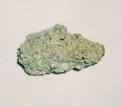
Chassigny |
Chassigny (astronomy and space ) The Chassigny Martian meteorite falls in Chassigny, Haute-Marne, France. |
|
03 Oct 1818

Alexander Macmillan |
birth Alexander Macmillan Born 3 Oct 1818; died 26 Jan 1896 at age 77. Scottish publisher who, though not himself a professional scientist did much to promote science in the Victorian times by publishing the journal Nature, enabling communication between men of science. He was prompted by Norman Lockyer, its first editor. The first issue was published on 4 Nov 1869. The journal had the support of many influential contributors, including Thomas Huxley. Yet, it remained a financial challenge for Macmillan. Other scientific quarterlies had short lives. Macmillan tolerated losses for three decades, because of his committment to the journal's mission “to place before the general public the grand results of scientific work and scientific discovery; and to urge the claims of science to move to a more general recognition in education and in daily life.” That mission continues to the present day. |
|
03 Oct 1830

George Brayton |
birth George Brayton Born 3 Oct 1830; died 17 Dec 1892 at age 62. George Bailey Brayton was an American engineer who invented the first commercial gas internal combustion engine (patented 2 Apr 1872), which he manufactured and sold in the Providence, Rhode Island, area. Its principle of continuous ignition later became the basis for the turbine engine. A pressurized air-fuel mixture from a reservoir was ignited upon entering a water-cooled cylinder. The Brayton engine was given trials powering watercraft, one of John Holland's submarines and one used for a few months installed in a carriage (1872-3). His earlier career included developing steam engines. |
|
03 Oct 1844
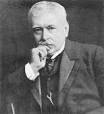
Sir Patrick Manson |
birth Sir Patrick Manson Born 3 Oct 1844; died 9 Apr 1922 at age 77. Scottish physician and parasitologist who has been called the “father of tropical medicine.” He was the first to identify an insect for the spread of infection (1877-79). While working at Amoy, China, he found the development phase of filaria worms in the tissues of blood-sucking mosquitoes. This parasite worm causes the filariasis disease when transferred to human body tissues. In 1894, he proposed a mosquito-malaria hypothesis. Manson moved to Hong Kong (1883-89), where he set up a medical school. In 1886 he co-founded Dairy Farm to produce contamination-free cows' milk. He also researched sleeping sickness and beri-beri, and helped introduce vaccination to the Chinese. He inspired Alphonse Laveran's discovery of the malarial parasite, and Sir Ronald Ross's proof of transmission of malaria by Anopheles mosquitoes. |
|
03 Oct 1844

Patrick Manson |
birth Patrick Manson Patrick Manson (died 1922), Scottish parasitologist, the "father of tropical medicine" . |
|
03 Oct 1854

William Crawford Gorgas |
birth William Crawford Gorgas Born 3 Oct 1854; died 3 Jul 1920 at age 65. Major William Crawford Gorgas was a U.S. Army surgeon who contributed greatly to the building of the Panama Canal by introducing mosquito control to prevent yellow fever and malaria. Originally, Gorgas doubted the conclusion of Walter Reed's Yellow Fever Commission in Cuba (1900) that the mosquito was the only means by which the disease spread. Nevertheless, Gorgas supported the new policy and eventually became the most active proponent of the mosquito theory in the United States. In Cuba, he assisted in eliminating mosquito breeding grounds. In 1904, Gorgas led the ten-year anti-mosquito campaign to wipe out yellow fever in Panama. |
|
03 Oct 1854

Hermann Struve |
birth Hermann Struve Hermann Struve (died 1920), Russian-born astronomer. |
|
03 Oct 1860
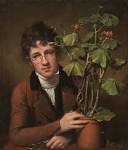
Rembrandt Peale |
death Rembrandt Peale Died 3 Oct 1860 at age 82 (born 22 Feb 1778). American artist and naturalist, son of Charles Willson Peale, who followed his father as a portrait painter with an interest in natural history. Many of Rembrandt Peale's portraits are of scientists. He also took an interest in the technology of his era, including the pioneering steam navigation of John Fitch and Robert Fulton, gas lighting of Baltimore's streets, and the chemistry of pigments. In 1801, he assisted his father's excavation of mastodon bones from the peat bogs of Orange County, New York, from which they assembled two skeletons. One was mounted in his father's Philadelphia Museum. Rembrandt displayed another as a travelling exhibit around New York (1802) and London (1802, 1803). From the details of its fossil teeth, he believed the mastodon was a carnivor, though Georges Cuvier shortly established it was a herbivor. |
|
03 Oct 1867
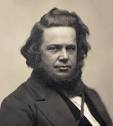
Elias Howe |
death Elias Howe Died 3 Oct 1867 at age 48 (born 9 Jul 1819). American inventor who invented a commercially successful sewing machine. Although it was Walter Hunt who built America's first sewing machine, in 1834, (then thought about it as a destroyer of home stitchers' jobs) but Hunt did not pursue it. Later, Howe spent years developing a functional design, and was granted a patent on his own machine on 10 Sep 1846. Commercial success came slowly, requiring the defense of his patent against Isaac Singer's better marketed machine. Eventually he gained riches, but died young at 49. By then, his sewing machine helped revolutionize garment manufacture in the factory and in the home. |
|
03 Oct 1869

Robert W. Paul |
birth Robert W. Paul Robert W. Paul (died 1943), English pioneer of cinematography. |
|
03 Oct 1876

Gabrielle Howard |
birth Gabrielle Howard Gabrielle Howard née Matthaei (died 1930), plant physiologist. |
|
03 Oct 1887
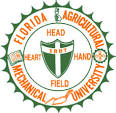
Florida A&M University |
Florida A&M University (organizations) Florida A&M University opens its doors in Tallahassee, Florida. |
|
03 Oct 1888

ballpoint pen |
ballpoint pen (technology) The first patent for a ballpoint pen is granted to John Loud, a British tanner who wishes to produce a writing instrument that can write on leather. |
|
03 Oct 1899
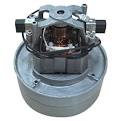
Motor vacuum cleaner |
Motor vacuum cleaner In 1899, the motor-driven vacuum cleaner was patented (U.S. No. 634,042) as a "pneumatic carpet renovator" by John S. Thurman of St. Louis, Mo. Thurman developed a gasoline powered vacuum cleaner and the General Compressed Air Company. In a newspaper advertisement from the St. Louis Dispatch Thurman offered his invention of the horse drawn (which went door to door) vacuum system there in St. Louis. He offered vacuuming services at $4 per visit - a significant amount in that era. By 1906, Thurman was offering built-in central vacuum systems. They actually used compress air, though, and featured no dust collection. |
|
03 Oct 1904

Charles J. Pedersen |
birth Charles J. Pedersen Born 3 Oct 1904; died 1989 . Korean-American chemist who, along with Jean-Marie Lehn and Donald J. Cram, was awarded the 1987 Nobel Prize for Chemistry for his synthesis of the crown ethers - a group of organic compounds with structure-specific interactions of high selectivity when reacting with other atoms and molecules much as do the molecules in living organisms, i.e. molecules that can "recognize" each other and choose with which other molecules they will form complexes. The three researchers studied chemical and physical properties of these complexes and have elucidated the factors that determine the ability of the molecules to recognize each other and fit into one another like a key fits a lock. |
|
03 Oct 1910

Lucy Hobbs Taylor |
death Lucy Hobbs Taylor Died 3 Oct 1910 at age 77 (born 14 Mar 1833). Lucy Beaman Taylor (née Hobbs) was an American dentist who was the first woman dentist in America to graduate (1866) from a dental college as a Doctor of Dental Surgery. Earlier, being long refused admission to dental schools (1859-65), she had acquired the skills of dentistry, and practiced without a diploma, as was common at the time. Then the Iowa State Dental Society supported Lucy's ambition for a college degree, demanded her admission, and she was accepted by the Ohio College of Dentistry. After graduation, she practiced for a short time in Chicago, then married James M. Taylor and taught him dentistry. The couple moved to Lawrence, Kansas, in December, 1867, opened a joint office and soon enjoyed a prosperous practice (1867-86). |
|
03 Oct 1916

Frank Pantridge |
birth Frank Pantridge Born 3 Oct 1916; died 26 Dec 2004 at age 88. Irish cardiologist who developed the life-saving portable defibrillator. He found out that death occurred within the first hour for 60% of males (up to middle-age) that died from heart attack, and of these, 90% suffered ventricular fibrillation. To begin earliest possible treatment, in 1965, Pantridge equipped an ambulance with a portable defibrillator. It achieved a 50% long-term patient survival rate. This pre-hospital coronary care plan was adopted rapidly in America and was used in 1972 when President Lyndon Johnson suffered a heart attack during a visit to Virginia. In 1979, the first automated external defibrillators (AEDs) became available. The British government lagged, but in 1990 funded defibrillators for all front-line ambulances in England. |
|
03 Oct 1922

Telephone fax |
Telephone fax In 1922, city telephone lines were used for the first time in the U.S. for the transmission of a facsimile photo in Washington, DC. Charles F. Jenkins sent an image from 1519 Connecticut Ave to the U.S. Navy Radio Staion NOF at Anacostia, D.C. Witnesses from the U.S.Navy and the Post Office Dept. attended the transmission. A photographic plate was used to record the signals at 5502 16th St, N.W. Washington, D.C. Earlier in the year, on 11 Jun 1922, a photograph had been sent by radio across the Atlantic from Rome to Bar Harbor, Maine. That transmission reproduced a 7 x 9.5 in. halftone picture, using light falling on a selenium cell to form the dots. |
|
03 Oct 1923

Kadambini Ganguly |
death Kadambini Ganguly Kadambini Ganguly (born 1861), physician. |
|
03 Oct 1932

Maximillian Franz Joseph Cornelius (Max) Wolf |
death Maximillian Franz Joseph Cornelius (Max) Wolf Died 3 Oct 1932 at age 69 (born 21 Jun 1863). Maximilian Franz Joseph Cornelius Wolf was a German astronomer who founded and directed the Königstuhl Observatory. He used wide-field photography to study the Milky Way and used statistical treatment of star counts to prove the existence of clouds of dark matter. He was among the first astronomers to show that the spiral nebulae have absorption spectra typical of stars and thus differ from gaseous nebulae. His most important contribution was the introduction of photography to discover hundreds of asteroids, the first of which he named Brucia in honor of the donor of his 16-inch double telescope, Catherine Wolfe Bruce. |
|
03 Oct 1941
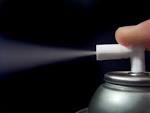
Aerosol |
Aerosol In 1941, a patent for the first aerosol can used in a commercial application was filed by chemist Lyle D. Goodhue and entomologist William N. Sullivan, researchers at the U.S. Dept. of Agriculture. It was titled a “Dispensing Apparatus” (U.S. No. 2,331,117, issued 5 Oct 1943). To apply oil-free insecticides in mushroom houses, they dissolved an insecticide in a nonflammable, liquefied gas under pressure in a strong steel container. The insecticide was allowed to escape in a fine spray through an oil burner nozzle. During WW II similar cans, dubbed “bug bombs,” were used to protect troops from malaria-carrying mosquitoes. Under the public service patent, royalty-free licenses were issued for the manufacture of insecticidal aerosols until the patent expired in 1960. Many improvements followed. |
|
03 Oct 1942

V-2 rocket |
V-2 rocket (astronomy) The first V-2 rocket is successfully launched from Test Stand VII at Peenemünde, Germany, flying a distance of 147 km and reaching a height of 84.5 km, becoming the first man-made object to reach space. |
|
03 Oct 1945
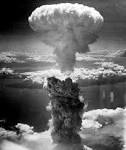
Atomic bomb security |
Atomic bomb security In 1945, following a message from President Truman, a bill sponsored by the war department and known as the May-Johnson bill was introduced into the U.S. Congress. The purpose of this bill was to keep the atomic bomb a secret under stringent security restrictions. Because it failed to provide for the sharing of information with foreign countries, and granted a dominant role to the military, scientists throughout the country were galvanized in opposition. Due in part to lobbying by scientists such as Leo Szilard and other groups, the May-Johnson Bill was tabled in December. The McMahon Act, signed on 1 Aug 1946, mandated civilian control of atomic energy under the auspices of the Atomic Energy Commission (AEC). |
|
03 Oct 1947

Telescope lens |
Telescope lens In 1947, after 11 years of grinding and polishing a 200-inch diameter telescope lens for the Mount Palomar Observatory was completed at the California Institute of Technology. This lens, the first of its size made in the U.S., began when 20 tons of molten glass at 2,700 deg. Fahrenheit were poured into a ceramic mold at Corning Glass Works, N.Y. on 2 Dec 1934. The glass lens was allowed to cool only one or two degrees per day over the next eleven months, and then brought to room temperature. The telescope in which the lens was mounted was named the Hale Telescope in recognition of the late Dr. George E. Hale who had initiated the project. The completed telescope was first used on 1 Feb 1949 by taking pictures of a Milky Way constellation. |
|
03 Oct 1952

Videotape recording |
Videotape recording In 1952, the first U.S. video recording on magnetic tape giving credible results of off-air black and white recordings was made by John T. Mullin at the electronics division of Bing Crosby Enterprises, Inc., Los Angeles, Cal. Using a Video Tape Recorder, the images on magnetic tape were not only one-third less costly than photographic methods, but were also immediately available to reproduce on a standard TV monitor tube as soon as the tape was rewound. The 12-head VTR used one-inch tape running at 120 inches per second to record ten tracks of monochrome video information, a clock track to control synchronization and an FM audio track. The basic theory was to use frequency division multiplexing with the 10 channels covering the desired video range. |
|
03 Oct 1952
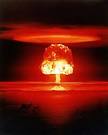
First UK atom bomb test |
First UK atom bomb test In 1952, “Hurricane,” the first British atomic bomb was tested at the Monte Bello, Australia, becoming the third country in the world to test such a weapon. The bomb used an improved plutonium implosion bomb similar to the U.S. "Fat Man". The bomb used plutonium produced in Britain at Windscale (now Sellafield) with a low Pu-240 content since hurried production led to short irradiation times, plus some Canadian origin plutonium. To test the effects of a ship-smuggled bomb (a threat of great concern at the time), Hurricane was exploded inside the hull of the HMS Plym (1450 ton frigate) which was anchored in 40 feet of water 400 yards off shore. The explosion, 9-ft below the water line, left a saucer-shaped crater on the seabed 20-ft deep and 1,000-ft across. |
|
03 Oct 1953

Florence Rena Sabin |
death Florence Rena Sabin Died 3 Oct 1953 at age 81 (born 9 Nov 1871). American anatomist who was one of the first women physicians to pursue a research career. Her investigation of the lymphatic system proved that it developed from the veins in the embryo and grew out into tissues, the reverse of then prevailing understanding. In 1903, she became the first woman on the faculty at Johns Hopkins University School of Medicine. It had initially been reluctant to hire a woman, but she had shown exceptional skill in papers published during a fellowship there. She moved in 1925 to head the cellular immunology section at the Rockefeller Institute, where she researched the body's white blood cells reaction to tuberculosis infection. In 1926, she was the first woman elected to the National Academy of Sciences. |
|
03 Oct 1967

Record speed |
Record speed In 1967, the X-15 rocket plane achieved a world record speed of Mach 6.7, which is 4,520 mph or over a mile per second, with U.S. Air Force pilot Pete Knight. It reached an altitude of 192,100 feet (58,552 m). Its internal structure of titanium was covered with a skin of Inconel X, a chrome-nickel alloy. To save fuel, the X-15 was air launched from a B-52 aircraft at about 45,000 ft. Test flights between 8 Jun 1959 and 24 Oct 1968 provided data on hypersonic air flow, aerodynamic heating, control and stability at hypersonic speeds and piloting techniques for reentry used in the development of the Mercury, Gemini, and Apollo spaceflight programs. The X-15 reached 354,200 feet (67 miles) on 22 Aug 1963. |
|
03 Oct 1976

Smithsonian Institution |
Smithsonian Institution (history of science a) Opening of the Dibner Library of the History of Science and Technology at the Smithsonian Institution's National Museum of History and Technology in Washington, D.C. |
|
03 Oct 1988

Sir Alec Issigonis |
death Sir Alec Issigonis Died 3 Oct 1988 at age 81 (born 18 Nov 1906). Alexander Arnold Constantine Issigonis was a Turkish-British engineer who was the designer of the Mini car, a landmark in automotive design when the British Motor Corporation introduced the Morris Mini-Minor on 26 Aug 1959. It was only 10 ft long, yet seated four passengers, and one of the lowest priced cars on the market. To save space, the engine was mounted transversely, and it had all-independent suspension. Issigonis believed that “when you're designing a new car for production, never, never copy the opposition.” Thus the Mini looked like no other car, provided a vehicle that carried the greatest payload in the smallest practical space, and incorporated new engineering principles. It remains successful over five decades later because he built it from the start for fuel economy, fast acceleration, maneuverability and ease of parking. |
|
03 Oct 1994

Heart device |
Heart device In 1994, the Food and Drug Administration approved the Left Ventricular Assist Device, which helps failing hearts continue to function. |
|
03 Oct 2005
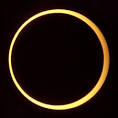
Annular solar eclipse |
Annular solar eclipse (astronomy) Annular solar eclipse |